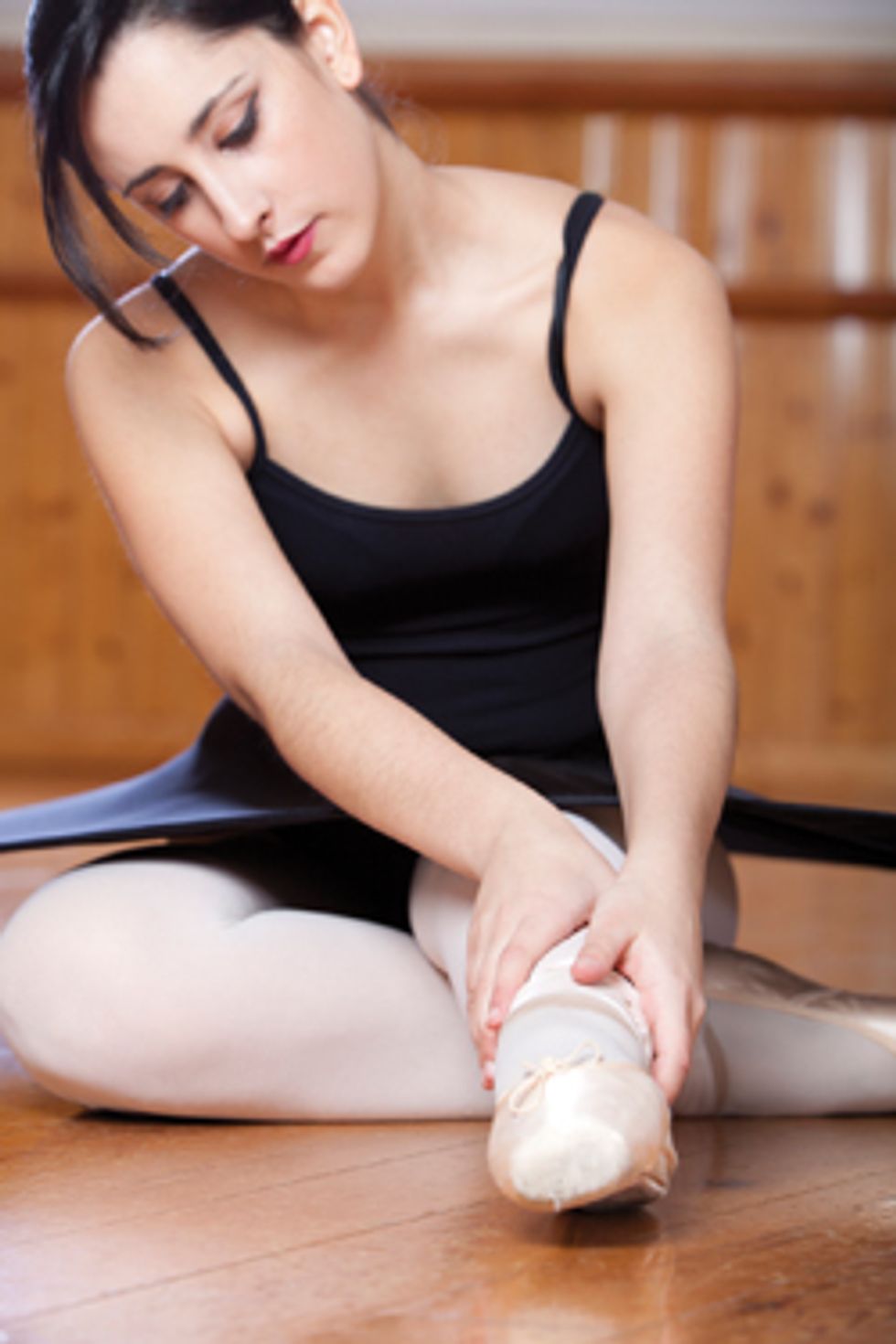Pain in the…

Take care of your body so you can stay in the studio—and not on the sidelines.(iStock)
Every dancer, at some point, is faced with physical pain. Fractured bones, inflamed tendons and muscle strains seem to come with the territory. They might even force you to take an unwanted break.
But injuries, particularly overuse injuries, can be prevented. DS talked to medical experts about the most common problems dancers face. Take their advice to stay ahead of the pain—and off the injured list.
Stress Fractures
What they are:
Stress fractures are small cracks in the bone that occur when too much force goes through the bone. They’re commonly seen in the second and third metatarsals, but shin splints can also turn into stress fractures if you’re not careful. “The muscle pulls on the outside lining of the bone and becomes inflamed,” says Michelle Rodriguez, physical therapist and owner of Manhattan Physio Group. “If you keep jumping and pushing through it, you can end up with a stress fracture.”
How to prevent them:
When your workload or class schedule increases over a short amount of time, you’re at risk for a stress fracture. Try not to do too much too soon. Slowly build up the number of classes you take, and limit the number of big jumps you do in one day.
It’s important to get plenty of calcium and magnesium in your diet, since they keep your bones strong. Foods like spinach, broccoli and dairy products will give you a boost. It’s also crucial that you get your period, since estrogen plays an important role in bone density. “Many young dancers don’t get their periods within the average age range because of the pressure to be thin. They’ve got all this physical demand on an immature skeletal system,” Rodriguez says. If you don’t have your period by age 15 or 16, talk to your doctor.
How to treat them:
Rest for 4 to 10 weeks. Your doctor might put you in a walking boot to protect the injury. If you start having tenderness in the middle of your shin or feel a bump on that bone, see a doctor right away. Tibia fractures will keep you from jumping for several weeks.

Not nearly as pretty as pointe shoes… (iStock)
Tendinitis
What it is:
Inflammation of the sheath around the tendon, or tendinitis, is another overuse injury. “I see the condition most in the Achilles and the FHL (flexor hallucis longus) tendon, which points the big toe,” says Dr. Kevin Varner, an orthopedic surgeon who works with dancers at Houston Ballet. “It happens when dancers overwork their bodies and get muscle fatigue, like during a long run of Nutcracker shows.” Also common is patellar tendinitis, or jumper’s knee. As your quadricep muscles get tighter and tighter, they put tension on your kneecaps and pull the patella up toward the thigh.
How to prevent it:
One of the most important ways to prevent tendinitis in the ankles is to practice good alignment. “Be sure to relevé over the middle of your foot and ankle,” Rodriguez says. “The more you wing your big toe, the more you overuse your FHL.” Since the FHL muscle is deep in your calf, you can use a ball to massage it and release its pull on the tendon. For jumper’s knee, get into the quadriceps with a foam roller or a dense rubber ball—and then stretch.
How to treat it:
“When you have recurring tendinitis, make sure you find the underlying cause,” Varner says. “Forcing your turnout and rolling in on your ankles will make your Achilles tendons tight, for example.” Physical therapy, ice and anti-inflammatories can help reduce pain and swelling.
Ankle Sprain

Protect, rest, ice, compress and elevate—then say goodby to that pesky sprain. (iStock)
What it is:
Ankle sprains catch you by surprise. One minute you’re fine, and the next you’ve twisted your foot and overstretched or torn ligaments around your ankle. “The typical ankle sprain is in someone with a high arch, because they tend to roll the ankle to the outside more,” Varner says. Varner sees more ankle sprains in younger dancers, usually because of poor technique. “They don’t land from a jump the way they should and end up twisting their ankles.”
How to prevent it:
Strengthen the peroneal tendons on the outer sides of the ankles to provide more stability. Do Thera-Band exercises to practice winging and sickling the foot and multiple series of relevés with proper alignment.
How to treat it:
Protect, rest, ice, compress, elevate (PRICE). “Make sure you’ve recovered fully before returning to the studio,” Varner says. “Injuries that aren’t rehabbed all the way tend to recur.”
Lower Back Strain
What it is:
Many dancers experience lower back strains and tightness. “Sometimes they try to attain a certain line, like arabesque, and compress their lower backs in an attempt to get their legs up higher,” Rodriguez says.
How to prevent it:
Lower back strains can be prevented by strengthening the core muscles. If your midsection is strong, you’ll engage your core muscles when you’re working instead of your back muscles.
How to treat it:
“Get a massage,” Varner says, “and try alternative medicine like acupuncture. Dancers find that it decreases swelling and lessens pain.”




